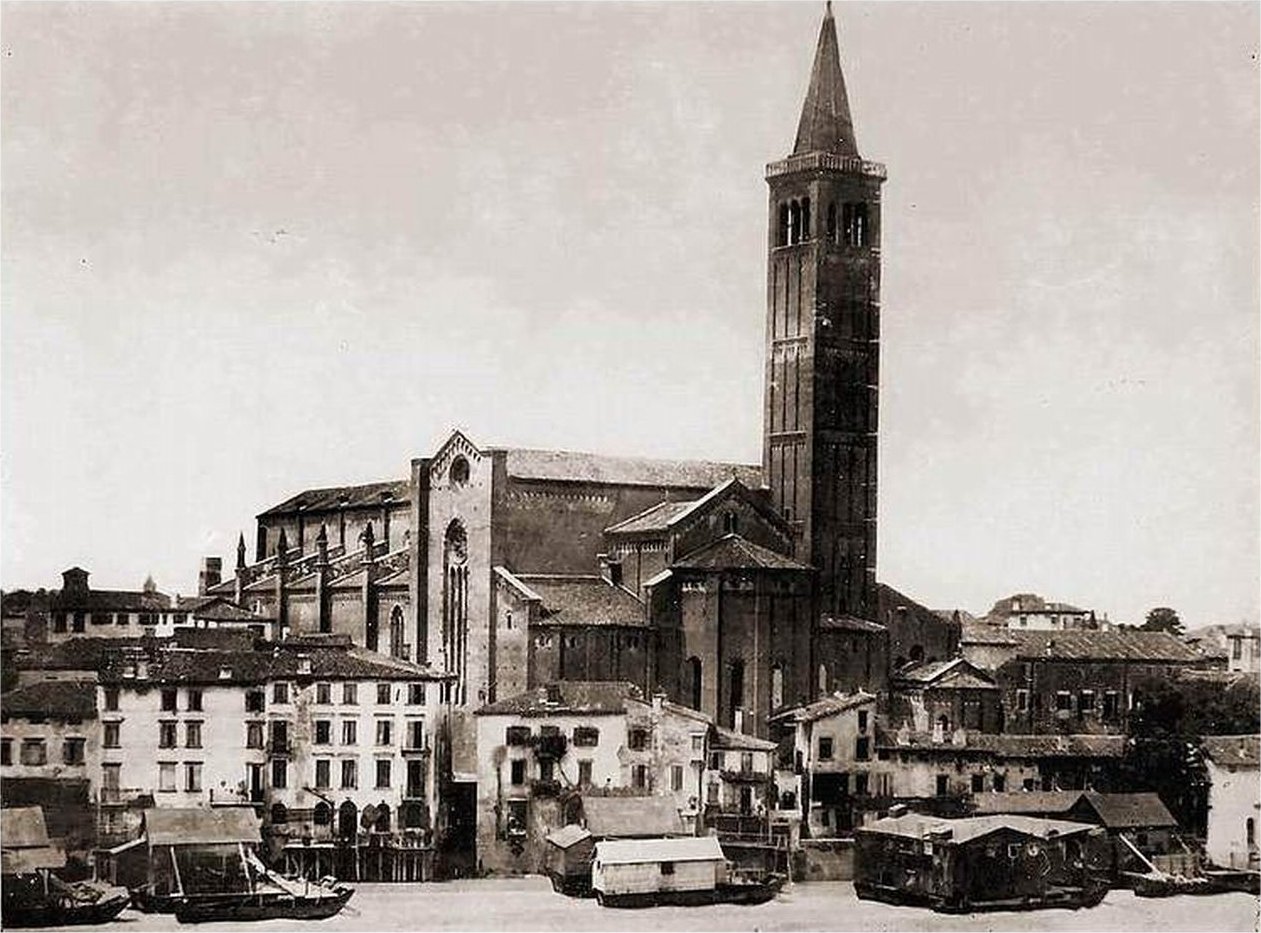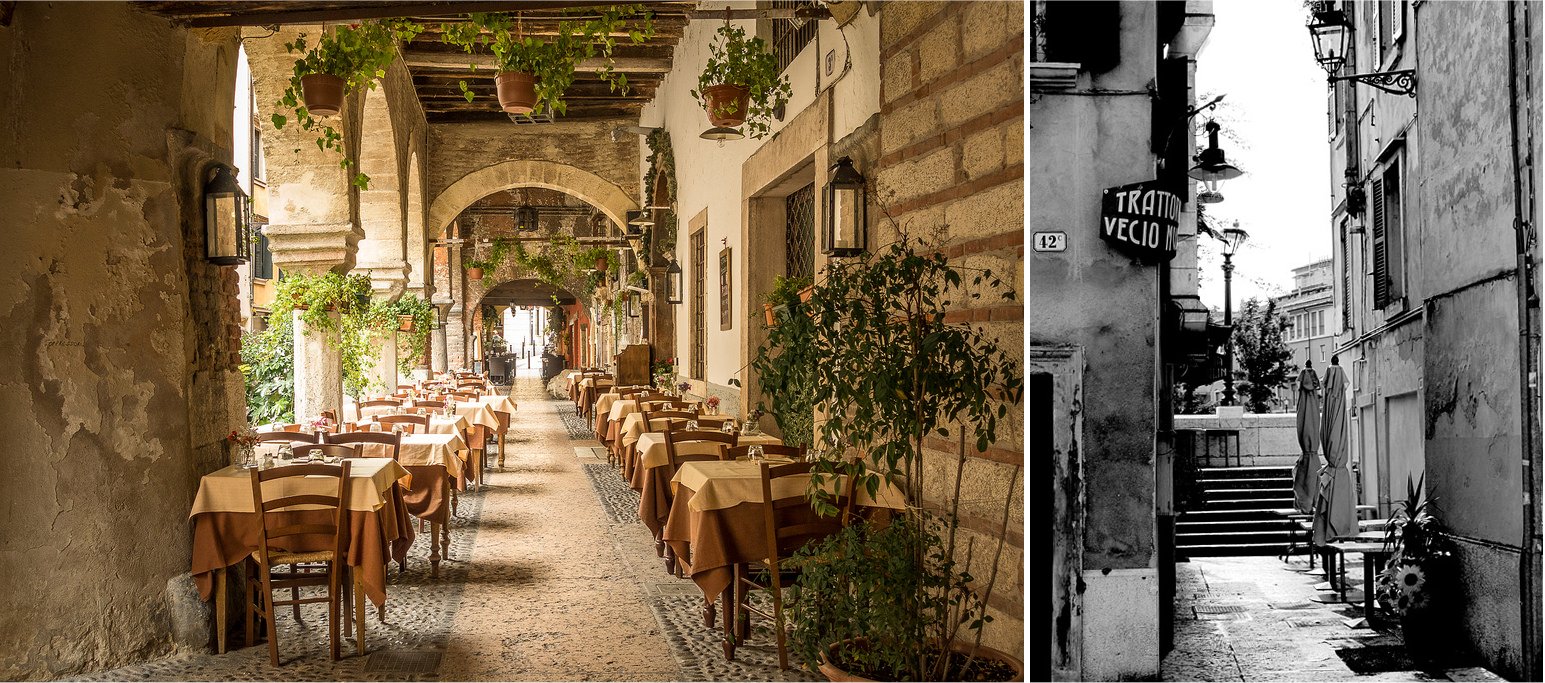La storia di via Sottoriva s’intreccia con le caratteristiche più peculiari della città di Verona.

In via Sottoriva è possibile ancora intravedere la natura di una Verona tardo medievale, prima che le più recenti trasformazioni ne occultassero il carattere popolare e di area produttiva.
La via si trova in prossimità dell’Adige, e in antichità, come il nome suggerisce, si trovava addirittura al livello del fiume, da cui era separata da un argine, che fungeva da precaria difesa dalle acque e soprattutto da appoggio per chi lavorava sui mulini, che occupavano il corso dell’Adige dalla Bra dei Molinari a Ponte Nuovo.
La riva del fiume era collegata alla strada da una serie di vò, un nome dialettale, che indica i vicoletti stretti che si incuneavano nelle case fronte fiume. Queste erano le dimore dei molinari, coloro che lavoravano sui molini che qui sorgevano numerosi, organizzate in modo da essere luoghi di abitazione e di lavoro: i piani terra erano adibiti a fondaci, magazzini e botteghe artigiane, mentre nei livelli superiori abitavano le famiglie.

Per la sua estrema vicinanza alle acque e la precarietà dell’argine, la via era sommersa a ogni piena dell’Adige: sui muri delle sue case sono ancora visibili i segni del livello raggiunto da fiume nel corso della devastante alluvione del 1882.
La città prese importanti provvedimenti a livello urbanistico in seguito a questo evento, tra cui il rialzamento degli argini, i quali, assieme al progressivo abbandono dei molini, cambiarono notevolmente l’aspetto di via Sottoriva.
Nonostante questo, essa è rimasta una delle vie più “medievali” della città, complici soprattutto il suggestivo portico che ne accompagna il lato sinistro e le dimore due-trecentesche, già di proprietà dei Monselice, che vi si affacciano con le loro bifore romaniche e le finestre ad arco trilobato.

Una curiosità: quando nel 1797 i Francesi introdussero per la prima volta in città la numerazione civica, la prima strada a esserne beneficiata fu proprio via Sottoriva. Qui, pertanto, all’altezza dell’attuale numero 52, Verona ebbe il suo primo numero civico.



Cache nascosta in occasione dell'event di Natale (Geo-Verona) Gli auguri di Natale del 15 dicembre 2018.



[EN] The history of via Sottoriva intertwines with the most peculiar characteristics of the city of Verona. In via Sottoriva it is still possible to glimpse the nature of a late medieval Verona, before the most recent transformations obscured its popular character and production area.
The road is located near Adige river, and in antiquity, as the name suggests, it was even at the level of river, from which it was separated by an embankment, that served as a precarious defense from the waters and above all from support for those who worked on the mills, that occupied the course of Adige from Bra dei Molinari to Ponte Nuovo.
The bank of the river was connected to the street by a series of “vò”, a dialectal name that indicates narrow alleys that were wedged in houses facing river. These were the dwellings of the millers, those who worked on the mills that were numerous here, organized in order to be places of residence and work: the ground floors were used as warehouses and craft shops, while the upper levels lived families.
Because of its extreme proximity to the waters and the precariousness of embankment, the street was submerged in every flood of the Adige: on the walls of its houses are still visible signs of the level reached by the river during the devastating flood of 1882. The city took important measures in terms of urban planning following this event, including the raising of the banks, which, together with the progressive abandonment of the mills, significantly changed the appearance of via Sottoriva.
Despite this, it has remained one of the most "medieval" streets of the city, especially accomplices the evocative portico that accompanies the left side and the two-fourteenth-century houses, already owned by the Monselice, which overlook with their Romanesque mullioned window.
A curiosity: when in 1797 the French introduced the civic numbering for the first time in the city, the first road to be benefited was Via Sottoriva. Here, therefore, at the current number 52, Verona had its first street number.






